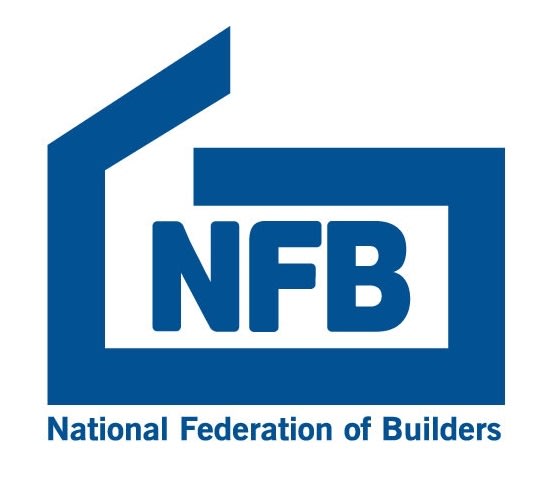The presentations from our Construction Summit are now available to download
Please CLCK HERE to view the event page with the presentations as attachments at he bottom of the page
This month CE Midlands held a launch event for our annual Awards
You can take a look at CE Midland’s CEO, Andrew Carpenter’s presentation from the event HERE
There are many ways you can get involved with our prestigious awards, as a main sponsor, category sponsor or even sponsor a drinks reception
If you are interested to support the awards and put your company name in front of our audiences then please take a look at our ‘Sponsor opportunities document HERE
We wanted to let our members know about two books written by Jennifer Charlson, which may be of interest on the topics of building safety and environmental law.
“Lessons from Grenfell Tower: The New Building Safety Regime”
You can access complementary details from these two publishers’ websites: Taylor & Francis and Routledge

“Environmental Law for Sustainable Construction: A guide for construction, engineering and architecture professionals“
You can access complementary details from these two publishers’ websites: Institution of Civil Engineers and Emerald

A technological revolution is coming. Something we have had every 50 years or so, beginning with the Industrial Revolution. Each wave or revolution has generated a great surge of development and immense wealth creating potential.
Through a combination of interrelated new products, technologies, industries, infrastructures, and organisational and managerial innovations, these waves produce a quantum jump in the potential for increasing productivity, embracing all or most sectors of the economy, and opening up an unusually wide range of investment and profit opportunities.
Such a radical transformation of the prevailing technical and managerial common sense for best productivity and most profitable practice is often termed a ‘paradigm’ shift because it is so pervasive and impacts on almost any industry or endeavour and wider society.
As we ride the sixth new wave and enter the new paradigm, there is much that we can we learn from the previous paradigm shifts.
For example, history tells us that a new paradigm is not just a new range of products and systems but most influential of all is the dynamics of the relative cost structure of all possible inputs to production. These inputs fulfil several conditions including clearly perceived and rapidly falling relative cost.
Amongst the other features of these waves is that these inputs or ‘key factors’ have the power to transform the rules of decision making and common-sense procedures and the ways of working established in the previous paradigm.
But, in the shift to a new paradigm, history tells us there are concerns as well as benefits, losers as well as winners. Take the case of the fourth wave (between the 1930s and 1980s). The rise of mass production and the proliferation of automobiles and aircraft spawned highways, and airports generated huge wealth but also stored up a significant legacy of problems such as degradation of the planet and its resources, and health and climate issues resulting from burning fossil fuels.
The next technological-economic shift is now here and we are beginning to see the new opportunities – but also the challenges – it presents. Mustafa Suleyman, one of tech’s true insiders, a technologist, entrepreneur, and visionary, in his book The Coming Wave, offers us an erudite, clear-eyed guide to the deep economic, technological, social, and political challenges that lie ahead in the new wave.
Sulyeman vividly explains that generative AI, synthetic biology, robotics, and other innovations are improving, becoming cheaper, spreading rapidly, and presenting exhilarating opportunities.
But he warns they pose threats too, being sufficiently powerful and pervasive to reshape every aspect of society including the distribution of power and wealth, the nature of warfare and work, and even human relations.
Construction will be affected by and play a significant role in the new wave. As in previous waves, we will provide the infrastructure to support the new technologies and industries. After all, we built the mills that spawned the Industrial Revolution and the vast factories that housed the growth of the automotive industry in the fourth wave, between the 1930s and 1990s.
Previous paradigm shifts have been fuelled by burning fossils. Now just think for a moment about the effort needed to transform our massive infrastructure from one based on oil and gas to one focused on clean electricity.
The coming wave will need to be fuelled by clean electricity, produced through a massive increase in nuclear and renewables coupled with a decentralisation and rewiring of the National Grid to accommodate more offshore wind by 2030.
As well as providing the physical infrastructure for the emerging industries we can also see the new technologies being deployed within the built environment, enabling SMART building solutions, and using AI for better product design, project management and raising productivity. And we already have virtual and augmented reality, drones, digital twin, 3D laser scanners, 4D simulation, BIM and 3D printing.
And the downsides? As in previous shifts there will be significant pitfalls. Not least that these technologies and new ways of working may be used to increase power differentials between construction’s main players resulting perhaps in more opportunistic behaviour and greater discrimination and inequality.
Indeed, some forecast that the coming wave promises to provide us with godlike powers of creation and one of our greatest challenges is to devise forms of governance that harness the benefits of AI and biotech whilst avoiding the dangers, and retaining power over entities that may be more powerful than ourselves. In other words, the coming wave could make the next decade the best in human history, or the worst.
















